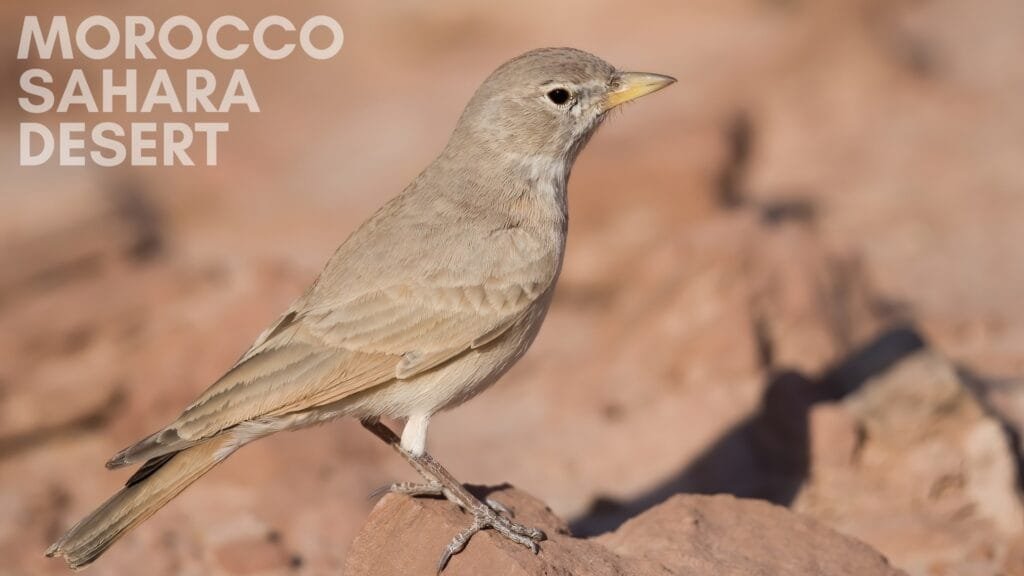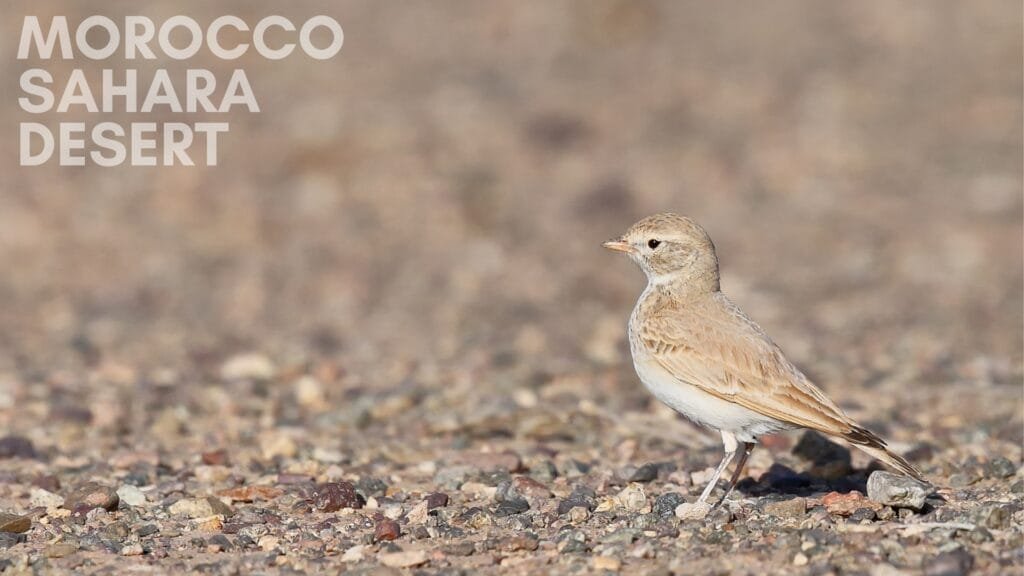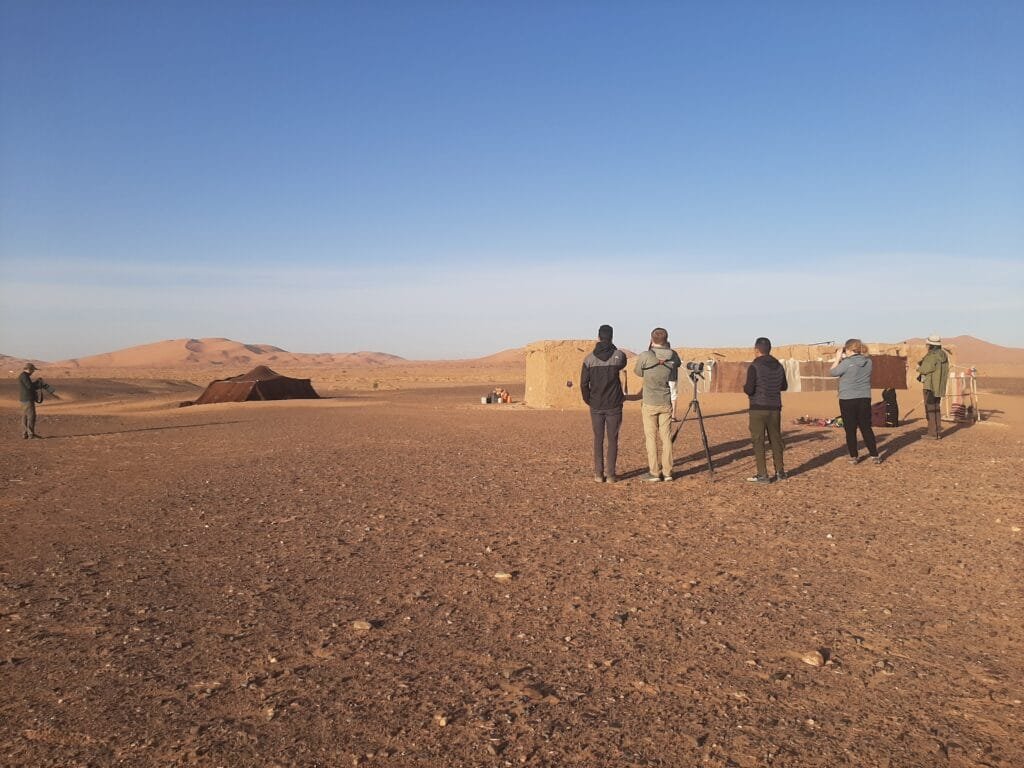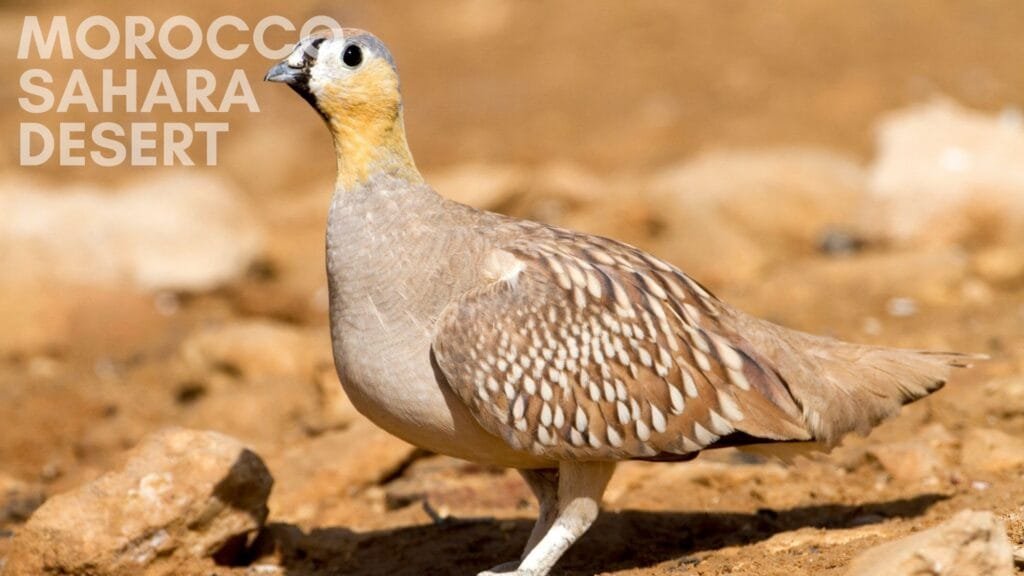Birdwatching in Merzouga and Rissani: The Sahara Desert Birdlife






The Sahara Desert is often associated with endless dunes, golden sands, and starry skies, but few people realize it’s also a haven for birdwatching in Merzouga and Rissani. These regions, located in southeastern Morocco, are home to a surprising variety of bird species, making them a must-visit destination for nature enthusiasts. From migratory birds to desert-adapted species, this area offers a unique opportunity to witness the beauty of avian life in an unexpected setting.
In this article, we’ll explore the birdlife of Merzouga and Rissani, highlight the best birdwatching spots, and provide tips for planning your birding adventure in the Moroccan Sahara.
Table of contents
- Birdwatching in Merzouga and Rissani: The Sahara Desert Birdlife
Why Merzouga and Rissani Are a Birdwatcher’s Paradise
Merzouga and Rissani are located near the edge of the Sahara Desert, where the arid landscape meets oases, wetlands, and the rugged foothills of the Atlas Mountains. This unique ecosystem creates a habitat for both resident and migratory birds.
The region’s Dayet Srji salt lake, located near Merzouga, is a particularly important site for birdlife. During the rainy season, the lake fills with water, attracting thousands of birds, including rare and endangered species. Rissani, with its palm groves and traditional agriculture, also provides a welcoming environment for birds.
Top Bird Species to Spot in Merzouga and Rissani
Here are some of the most fascinating bird species you can encounter in the region:
Desert Sparrow
The Desert Sparrow is a small, elusive bird perfectly adapted to the harsh desert environment. Its pale plumage helps it blend into the sandy landscape, making it a thrilling find for birdwatchers.
Flamingos
During the wet season, Greater Flamingos can be seen wading in the Dayet Srji salt lake. Their vibrant pink feathers create a stunning contrast against the desert backdrop.
Hoopoe Lark
The Hoopoe Lark is a desert specialist known for its distinctive crest and melodious song. It’s often spotted foraging for insects in the sandy plains.
Egyptian Nightjar
This nocturnal bird is a master of camouflage, blending seamlessly into the desert floor during the day. At dusk, it becomes active, hunting for insects under the starry Sahara sky.
Trumpeter Finch (rare)
The Trumpeter Finch is a small, colorful bird often seen in flocks near oases and palm groves. Its cheerful chirping adds a lively soundtrack to the desert landscape.
Marsh Harrier (rare)
The Marsh Harrier is a raptor commonly seen soaring over wetlands and lakes. Its presence is a sign of the region’s rich biodiversity.
Desert Wheatear
This small, agile bird is a common sight in the desert, often perching on rocks or low shrubs. Its striking black-and-white plumage makes it easy to identify.
Sandgrouse (Crowned and Spotted)

The Crowned Sandgrouse and Spotted Sandgrouse are iconic desert birds known for their unique adaptations. They often gather at waterholes in the early morning, making them a fascinating sight for birdwatchers.
Bar-tailed Lark
The Bar-tailed Lark is a small, ground-dwelling bird with a distinctive barred tail. It’s commonly found in arid regions and is known for its soft, melodic calls.
Lanner Falcon
The Lanner Falcon is a powerful raptor that hunts in open desert areas. Its speed and agility make it a thrilling bird to observe in flight.
Maghreb Lark
Endemic to North Africa, the Maghreb Lark is a rare and sought-after species for birdwatchers. It’s often found in rocky desert areas and is known for its beautiful song.
Fulvous Chatterer
The Fulvous Chatterer is a small, sociable bird often seen in groups. Its warm, sandy-brown plumage and chattering calls make it a charming addition to the desert birdlife.
Desert Warbler

The Desert Warbler is a small, elusive bird that thrives in arid environments. Its subtle plumage and secretive behavior make it a rewarding find for patient birdwatchers.
Best Birdwatching Spots in Merzouga and Rissani
Dayet Srji Salt Lake
This seasonal lake is one of the most important birdwatching sites in the region. During the rainy season, it attracts a wide variety of waterbirds, including flamingos, herons, and ducks.
Merzouga Dunes (Erg Chebbi)
The dunes of Erg Chebbi are home to desert-adapted species like the Desert Sparrow and Hoopoe Lark. Early morning and late afternoon are the best times for birdwatching here.
Rissani Palm Groves
The lush palm groves around Rissani provide a haven for birds like the Trumpeter Finch and Laughing Dove. The shade and water from the oases make this area a birding hotspot.
Ziz Valley
Located between Rissani, the Ziz Valley is a green oasis that attracts migratory birds and resident species. Look for warblers, wagtails, and raptors in this area.
Tips for Birdwatching in Merzouga and Rissani
- Visit During the Right Season
- The best time for birdwatching in Merzouga and Rissani is during the spring (March to May) and autumn (September to November). These seasons coincide with the migration periods, when the region sees an influx of migratory birds.
- Hire a Local Guide
- A local guide can help you locate rare species and navigate the desert terrain. They also have in-depth knowledge of the region’s birdlife and ecosystems.
- Bring the Right Gear
- Pack a good pair of binoculars, a field guide to North African birds, and a camera with a zoom lens. Don’t forget sunscreen, a hat, and plenty of water.
- Respect the Environment
- Avoid disturbing the birds or their habitats. Stick to designated paths and follow the principles of responsible birdwatching.
- Stay in a Desert Camp
- Many desert camps in Merzouga offer guided birdwatching tours. Staying overnight allows you to experience the desert’s nocturnal birdlife, such as the Egyptian Nightjar.
Conclusion: A Hidden Gem for Bird Lovers
Merzouga and Rissani may be best known for their stunning desert landscapes, but they are also a hidden gem for birdwatchers. Whether you’re a seasoned birder or a casual nature enthusiast, the region’s diverse birdlife and unique ecosystems offer an unforgettable experience.
So, pack your binoculars, grab your camera, and get ready to explore the avian wonders of Morocco’s Sahara Desert. From the vibrant flamingos of Dayet Srji to the elusive Desert Sparrow, every moment spent birdwatching in Merzouga and Rissani is a chance to connect with nature in one of the world’s most extraordinary settings.
Birdwatching with Local Guides and Drivers

At our organization, we organize birdwatching journeys with the help of local guides and sometimes drivers who double as guides due to the shortage of expert birding guides in the region. Most of the drivers we work with are highly knowledgeable about the area and know the best spots to find certain bird species. We also maintain contact with a local expert guide who provides us with updates on bird sightings and movements, as birds like the Desert Warbler, Fulvous Chatterer, and the elusive Egyptian Nightjar do not stay in one place for long.
It’s important to note that birdwatching in the desert can be unpredictable. Birds are free to fly wherever they choose, and factors like windstorms or sudden weather changes can affect their presence. While we strive to locate all the species on your list, there may be times when we cannot find a particular bird due to these natural variables. In such cases, we must move on due to time constraints and cannot return to search again.
Our main one-day package focuses on locating the following birds:
- Desert Sparrow
- Desert Warbler
- Sandgrouse (Crowned and Spotted)
- Egyptian Nightjar
While traveling between locations, we also keep an eye out for the Bar-tailed Lark and Desert Lark. Afterward, we head to Rissani to search for the Fulvous Chatterer and Maghreb Lark. However, we highly recommend a two-day journey for a more comprehensive experience. On the first day, we explore the desert, and on the second day, we focus on Rissani, where we can also look for the Lanner Falcon about 20 kilometers outside the city, along with other birding hotspots.
This extended itinerary increases your chances of spotting a wider variety of species and allows for a more relaxed and rewarding birdwatching experience.
FAQs
Spring (March to May) and autumn (September to November) are the best times, as these seasons coincide with bird migrations.
Yes, many local guides and desert camps offer birdwatching tours. Hiring a guide is recommended for the best experience.
During the wet season, you can spot flamingos, herons, ducks, and other waterbirds.
Binoculars, a field guide, and a camera with a zoom lens are essential. Sun protection and plenty of water are also important.
Yes, Merzouga is safe for visitors. However, it’s always a good idea to travel with a guide, especially in remote areas.












